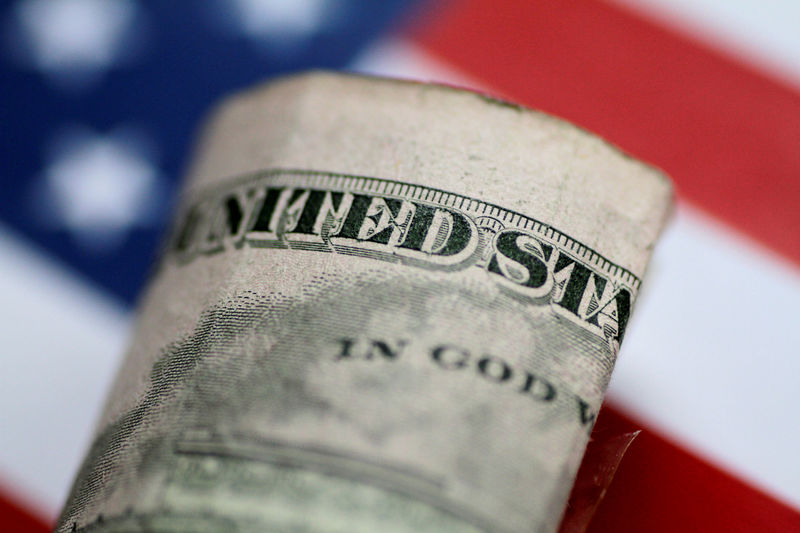* Dollar supported as risk appetite wanes
* Yen headed for worst week in two months after U.S. yields
jump
* Graphic: World FX rates in 2020 https://tmsnrt.rs/2RBWI5E
By Tom Westbrook
SINGAPORE, Aug 14 (Reuters) - The dollar steadied on Friday
as a jump in U.S. bond yields and a drag on sentiment from
lacklustre Chinese economic data put the brakes on a selldown of
the world's reserve currency.
China's retail sales unexpectedly extended their fall into a
seventh month in July and industrial output missed expectations
- suggesting bumps in even the world's most promising rebound.
The mood had the dollar within reach of snapping a
seven-week losing streak against the risk-sensitive Aussie
AUD=D3 , which has settled around $0.7149 and is flat for the
week.
Tepid demand in a long-dated U.S. government bond auction on
Thursday has also extended a surge in Treasury yields that has
drawn some investors - especially from Japan - back to dollars.
The yen JPY= is on course for its weakest week against the
dollar in two months and is down about 0.9% at 106.84 from last
Friday's close.
The biggest loser has been the kiwi NZD=D3 , which was
pressured at $0.6538, as the country faces a fresh coronavirus
outbreak and after the central bank this week flagged increased
bond buying and again mentioned the prospect of negative rates.
"Risk sentiment is slowing down," said Westpac FX analyst
Imre Speizer. "It's too early to say the whole (dollar)
downtrend is over...but it's got potential and at the very least
it's putting a cap on the Aussie and kiwi."
Troubling signs also emerged on the health front in Asia,
with 29 new cases in previously virus-free New Zealand prompting
an extension of Auckland's lockdown and the biggest daily jump
in new cases in South Korea since March.
Against a basket of currencies =USD the dollar remains
0.2% lower for the week, but it has appeared to arrest a slide
that has it about 9.5% below its March peak.
DIVERGENCE
Preliminary European employment and GDP numbers due at 0900
GMT and U.S. retail sales figures at 1230 GMT are the next set
of data for investors to parse for signs of divergence between
the U.S. and European recoveries.
Gathering faith in Europe's rebound, and doubts in the
United States as the virus spreads and politicians remain
deadlocked over the next relief package, have kept the euro firm
even as the dollar has been able to bounce a bit elsewhere.
A fall last week in the number of applications for
unemployment benefits in the United States to below one million
was welcome surprise, but with some 30 million out of work and
stimulus plans stalled the outlook remains grim. The euro EUR=EBS hung on at $1.1816 in the Asia session on
Friday and the pound GBP=D3 was also steady at $1.3062, as
investors have sought to focus on a rebound in growth in June
rather than the diabolical quarterly contraction.
Another element of divergence has opened up in the Tasman
Sea, where central banks on either side - in Australia and New
Zealand - are striking quite a different tone.
The Reserve Bank of New Zealand (RBNZ) sparked a bond rally
this week by promising to extend its own purchases and, next
week, speed them up as well.
And while the RBNZ talked about sub-zero rates, Reserve Bank
of Australia Governor Philip Lowe re-iterated on Friday that
fiscal support was what's needed. "(The RBNZ) are pro-active," said Chris Weston, head of
research at Melbourne brokerage Pepperstone.
"And if they want something they don't sit on their hands to
see how things evolve, they make it happen, or at least they
try. This to me is why AUD/NZD is likely going higher," he said.
The Aussie last sat at a 22-month high of NZ$1.10941
AUDNZR= , having forged nearly 1% this week and the spread
between Australian and New Zealand 10-year debt, at 28 basis
points, is at its widest since May.
(Editing by Shri Navaratnam and Jacqueline Wong)
